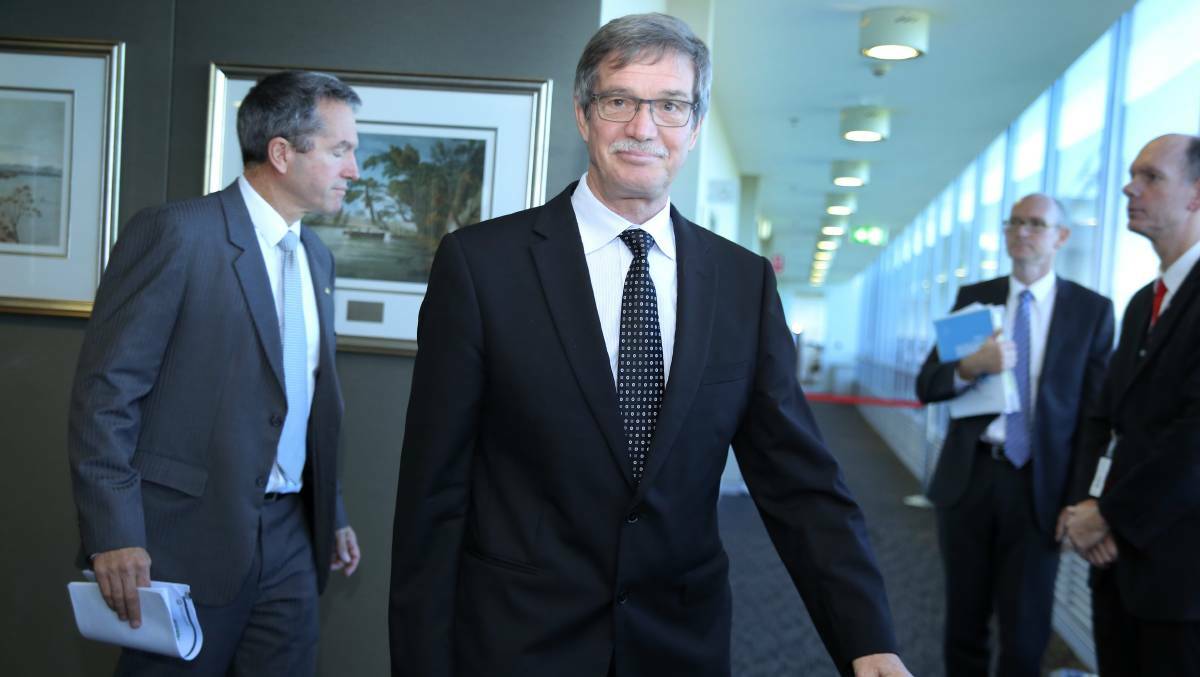
Western Australian treasurer Dr Mike Nahan released the 2016-17 state budget on Thursday afternoon with net debt forecast to rise to an estimated $33.8 billion by June 30, 2017 due to an ever-increasing population and a dramatic fall in commodity prices.
State debt is currently $27.8 billion and is expected to blow out to $40 billion by 2018-19.
In his budget speech to parliament Dr Nahan said this year’s budget took “a cautious approach to spending while keeping increases in household fees and charges as low as possible”
Dr Nahan said eight years ago WA’s population stood at 2.2 million. In those eight years it has grown by 450,000 people – or more than the population of the Australian Capital Territory.
“I am very proud of how this Government has met the demand created by this population boom,” Dr Nahan said.
“It has not been easy, we have had to spend a lot of money and quite frankly we have had to borrow a lot of money to do it, but I would argue that has been entirely appropriate given the exceptional circumstances of the times.
WATCH: WA Treasurer Dr Mike Nahan talk about the budget.
Dr Nahan told the house his government make no apologies for spending money in recent years to keep up with growing demand.
“Faced with the explosion in demand from the huge population increase, this government had no choice but to borrow to build the infrastructure to meet that demand,” he said.
“We make no apologies for meeting that challenge. We make no apologies for transforming the city, for transforming the regions, for lifting the whole state up with the rising tide of the resources boom and the opportunities it presented.
He also took a swipe at the amount of money the federal government delivers Western Australia through the GTS.
“The dramatic fall in commodity prices, coupled with declining business investment and the flow through effect on the rest of the economy, including the labour market, is resulting in greatly reduced returns to the government,” he said.
“This has caused a sudden uplift in state debt and that has to be addressed. The downturn in commodity prices hit harder and more dramatically than anyone expected.
“At the same time the perverse GST system delivered the lowest ever return in our tax dollar – with just 30 cents for every dollar raised in Western Australia staying in this state. Disgraceful.”
Key points of the 2016-17 budget
The 2016-17 budget includes initatives to further limit the growth in spending including the new 1.5 per cent public sector wages policy and an extended agency expenditure program, which will deliver an estimated savings of $1.3 billion.
There are also targeted increases in spending on priority services including $266 million for public hospital services, an increase of $81 million in recurrent spending on education and an increase of $67 million on policing.
The budget announced additional support of $47 million over 2016-17 to 2019-20 for the state’s tourism industry and $20 million over four years to support researchers, innovators and start-up businesses.
Dr Nahan used the 2016-17 budget to announce the government’s recruitment freeze was over.
“We introduced measures that have not always been popular – workforce renewal, recruitment freezes, procurement cuts and agency expenditure reviews, and our revised wages policy announced in February 2016 which pegs wage rises to 1.5 per cent, a policy that will save an estimated $826 million in salaries expenditure over the next four years,” he said.
“The recruitment freeze and our strong stance on wages policy has enabled us to avoid the large scale redundancy programs that have occurred in other jurisdictions. Salaries growth of just three per cent is now forecast for 2015-16, which is the lowest rate in 17 years.”
The 2016-17 state budget also included a $14.9 million boost in funding for the Mental Health Commission in aimed at tackling ice addition.
Assets still to be sold off
Asset sales are still on the cards with the government proposing to sell Western Power and Horizon Power’s transmission and distribution assets in the Pilbara after the next election.
“The proceeds will be used to reduce debt and to fund future infrastructure and a decision to sell the assets will only be made following confirmation that divestment is in the best interests of both taxpayers and electricity consumers,” Dr Nahan said.
“The proceeds will reduce debt to manageable levels and fund future capital expenditure. It will improve our operating balance, even after accounting for foregone dividends and taxes.
“The government will use the proceeds to retire up to $11 billion of state debt and create a $5 billion Infrastructure Fund to provide the capacity to finance key infrastructure projects that meet the needs of Western Australia into the next decade.
“The repayment of $11 billion in debt will represent around a 30 per cent reduction in net debt by the end of the forward estimates, and will reduce the state’s annual interest bill by hundreds of millions of dollars.”


